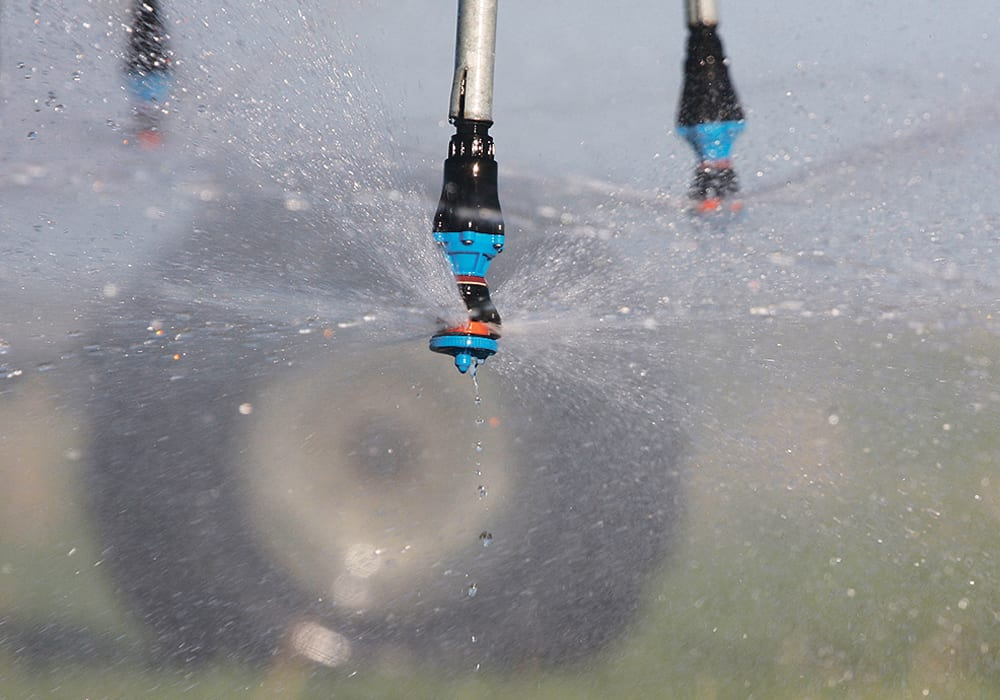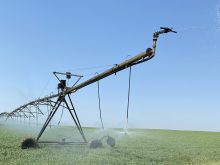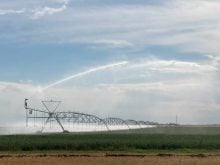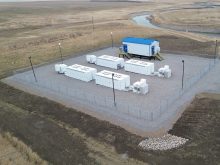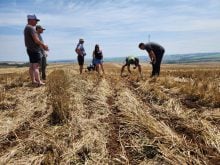Saskatchewan’s Water Security Agency is working toward making its water allocation process more modern and transparent.
Aaron Schweitzer, acting director of irrigation development, said practices and legislation have changed from when some of the older allocations were made.
“When we’re dealing with allocations sometimes the playing field is not exactly the same,” he said during a presentation at the Saskatchewan irrigation conference.
“What we’re working on today is really capturing the current state of water allocation practice in the province.”
Read Also

Research looks to control flea beetles with RNAi
A Vancouver agri-tech company wants to give canola growers another weapon in the never-ending battle against flea beetles.
He said WSA has two policies to prioritize: priority of use and how shortages are managed.
Shortages may become more frequent as more water is used and producers should know what would happen in that case.
Schweitzer said there is no riparian right to water in the province and rights are not transferrable. Water rights are tied to works on the land and when the land is sold, the rights become invalid, although the new owner gets first right of refusal.
“We don’t have a first in time, first in right system like Alberta or B.C.,” he said. “We got rid of that in ’84. As well, there is no guarantee of availability on any water licence we issue.”
Water licences are based on availability and purpose. Different percentages are allocated based on historical records within the water system.
“If an allocation is given at 70 percent availability, basically that water is available seven out of 10 years, based on historical record,” Schweitzer explained.
Allocation for industry and municipalities is 100 percent because there is no tolerance for shortage. Irrigation from Lake Diefenbaker and the Saskatoon South East Water Supply System is at 85 percent.
Normally, intensive irrigation is allocated at 70 percent, while flood irrigation drops down to 50 percent.
WSA can alter the allocations when shortages occur. For example, last year there was a shortage in the Big Stick basin.
“We like to have equitable availability for all users but in this case folks who were licensed at 70 percent availability for intensive irrigation, got six inches or half of their allocation, whereas the flood irrigators at 50 percent, didn’t get any, and that was a decision made by the government at the time, based on the circumstances.”
As part of the move toward more transparency, the WSA will look at whether the allocation process is working for irrigation.
“We also want to have the ability to refine our decision making based on water supply because one approach might work for Lake Diefenbaker but it might not work for Last Mountain Lake,” said Schweitzer.
He said some changes can likely be made internally while others will require legislation. Stakeholder engagement will be key and pilot projects with irrigators will illustrate the way forward.
Those pilots will involve unconventional thinking in terms of how much water and where it can be applied, but will be monitored and evaluated by a third party. They will also test land control because, as Schweitzer said, the WSA is a water manager, not a land manager.
Saskatchewan Irrigation Projects Association chair Aaron Gray said irrigators have been encouraging WSA for years to do just that.
“I honestly think we can learn,” he said. “We’ll be able to probably irrigate more acres, grow more food, on less allocation and we’ll be able to manage things on our operations.”




